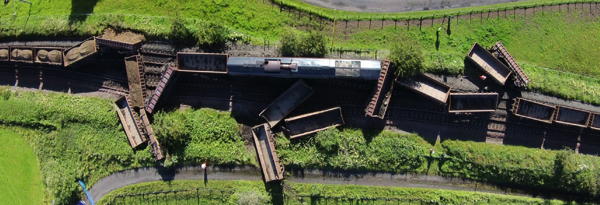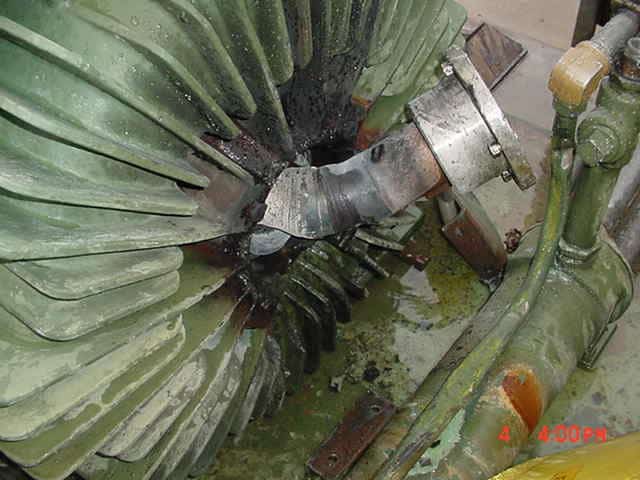Monday Accident & Lessons Learned: Freight train collision near Logan, UK


From the UK Rail Accident Investigation Branch…
On 1 August 2015 at about 11:11 hrs, a freight train travelling within a work site collided with the rear of a stationary freight train at 28 mph (45 km/h).
Engineering staff had authorised the driver of the moving freight train to enter the work site at New Cumnock station, travel about 3 miles (4.8 km) to the start of a track renewal site, and bring the train to a stand behind the stationary train.
There were no injuries but the locomotive and seven wagons from the moving train and eleven wagons from the stationary train were derailed; the locomotive and derailed wagons were damaged. One wagon came to rest across a minor road. There was also substantial damage to the track on both railway lines.
The immediate cause was that the moving train was travelling too fast to stop short of the rear of the stationary train when its driver first sighted the train ahead. This was due to a combination of the train movement in the work site not taking place at the default speed of 5 mph (8 km/h) or at caution, as required by railway rules, and the driver of the moving train believing that the stationary train was further away than it actually was.
An underlying cause was that drivers often do not comply with the rules that require movements within a work site to be made at a speed of no greater than 5 mph (8 km/h) or at caution.
As a consequence of this investigation, RAIB has made four recommendations addressed to freight operating companies.
One relates to the monitoring of drivers when they are driving trains within possessions and work sites.
Two recommendations relate to implementing a method of formally recording information briefed to drivers about making train movements in possessions and work sites.
A further recommendation relates to investigating the practicalities of driving freight trains in possessions and work sites for long distances at a speed of 5 mph (8 km/h) or at other slow speeds, and taking action to address any identified issues.
RAIB has also identified three learning points including:
the importance of providing drivers with all of the information they need to carry out movements in possessions and work sites safelya reminder to provide drivers (before they start a driving duty) with information about how and when they will be relievedthe importance of engineering staff giving instructions to drivers through a face to face conversation when it is safe and practicable to do so.



